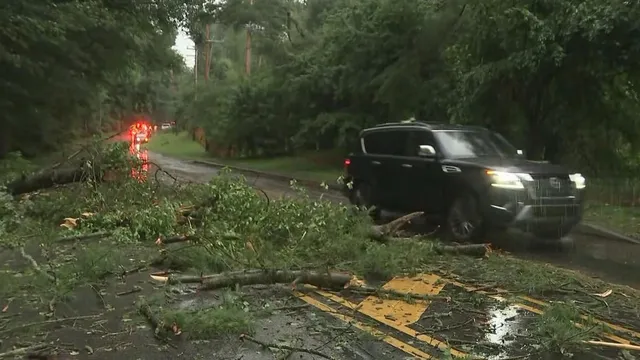
Severe storms leave thousands in Philadelphia without power
2025-06-19 23:25- On June 19, 2025, severe storms caused extensive power outages in the Philadelphia region.
- PECO reported the largest number of outages with over 247,000 customers without power.
- Recovery efforts are underway, but residents are now facing an impending heat wave.
Express your sentiment!
Insights
On June 19, 2025, severe storms impacted the Philadelphia region, causing widespread power outages and property damage across Pennsylvania, New Jersey, and Delaware. Following the storms, thousands of households experienced electricity disruptions, with PECO reporting the highest impact, as 247,293 of its customers in the Philadelphia area lost power. Bucks County was severely affected, recording 68,664 outages. Montgomery County and Delaware County also reported significant numbers, losing 62,997 and 63,480 customers, respectively. Delmarva Power and Public Service Enterprise Group faced outages among their customers as well, indicating the storms' widespread impact across the region. The extreme weather also resulted in substantial damage to infrastructure, including the WMMR radio station in Bala Cynwyd, which had part of its roof collapse during the storm. Fortunately, there were no reported injuries from this collapse, although some cars were damaged. This incident sheds light on the physical toll the storms took in addition to the loss of electricity. In another significant event, a child was injured when a tree fell in East Oak Lane, and another individual was hurt when a tree struck a vehicle in Overbrook. These incidents highlight the storm's dangerous impact on the community. Despite the severe weather threat passing, the aftermath of the storm left local hospitals, such as Jefferson Abington Hospital, without power for several hours, illustrating the storm's strain on emergency services. As recovery efforts began, utility companies worked diligently to restore power to affected residents. Meanwhile, the region prepared for a subsequent heat wave, signaling further weather challenges. It is important to note that while the threat of severe storms subsided, the community must be ready for other harsh weather conditions, as temperatures are expected to climb into the upper 90s over the upcoming weekend. This stark contrast in weather further complicates recovery efforts following the storm. Residents were urged to remain cautious while cleanup efforts were underway, and community responses were focused on addressing the immediate needs of those affected, particularly regarding safety and health, as the heat wave approached. Community updates on outages, safety protocols, and power restoration were disseminated to keep the public informed and engaged during this challenging time.
Contexts
On June 19, 2025, Philadelphia experienced a series of severe storms that had a significant impact on the city and its residents. The storms brought heavy rainfall, strong winds, and intense lightning, resulting in flooding, power outages, and damage to infrastructure. The city's emergency services were promptly mobilized to respond to the emergencies, with first responders working tirelessly to assist those affected. The storm's intensity was unprecedented for the month of June, raising concerns among local meteorologists about changing climate patterns and their potential implications for future weather events in the region. The flooding caused by the storms led to road closures, cancellations of public transport, and disruptions in daily life for many Philadelphians. Certain neighborhoods experienced more severe flooding due to inadequate drainage systems, highlighting the need for immediate infrastructure improvements. Local businesses were impacted as well, with some forced to close temporarily due to water damage and others experiencing a downturn in customer traffic during the storm's aftermath. The full economic impact of these storms will take time to assess, but early reports indicate that recovery efforts will be necessary for both residents and local business owners. Power outages affected thousands of households, leaving many residents without electricity for extended periods. Utility companies collaborated to restore power as quickly as possible, but challenges arose due to downed power lines and the volume of affected areas. The city implemented cooling centers for those in need, especially vulnerable populations who were at risk during the outages. The response to this emergency highlights the importance of resilient infrastructure and the need for contingency plans in preparation for future storms, which are likely to become more frequent due to climate change. In the days following the storm, city officials began assessing the damage and coordinating recovery efforts with state and federal agencies. Community organizations stepped in to provide support to those most affected, offering resources such as food, temporary shelter, and assistance with cleanup efforts. As Philadelphia reflects on the impact of the June 19 storms, the lessons learned will be crucial for enhancing the city's preparedness for future severe weather events. A comprehensive review of the storm's effects and the subsequent response will contribute to better strategies for risk mitigation, emergency management, and infrastructure development.